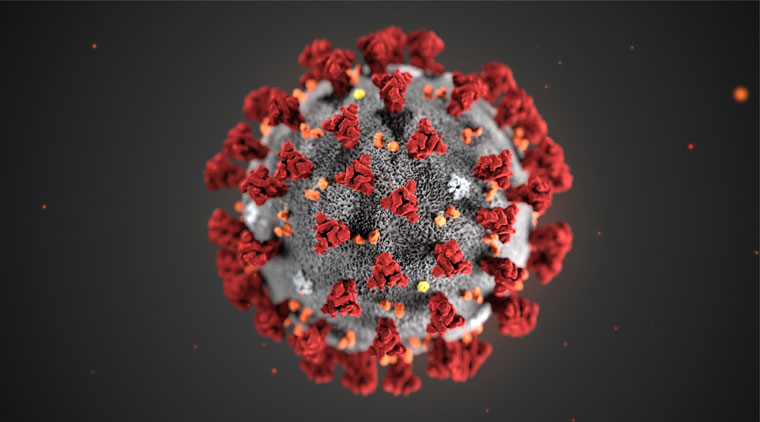
March 15, 2020
Congressmen call for public health coordination amid coronavirus outbreak
A coronavirus that recently emerged in China likely originated in animals before spreading person to person, according to the World Health Organization.
As the virus spread to thousands of people and crossed international borders, two veterinarians in Congress declared that the outbreak showed the importance of coordinating national and international responses. Rep. Kurt Schrader of Oregon and Rep. Ted Yoho of Florida said in a Jan. 30 call with media organizations that their legislation, the Advancing Emergency Preparedness Through One Health Act (HR 3771/S 1903), introduced in July 2019, would improve preparations for future outbreaks.
Dr. Schrader said well-intentioned epidemic responses by state governments and federal agencies tend to be isolated.
“We need to put all those groups together,” Dr. Schrader said. “The goal is to have a much more coordinated federal response that integrates with threats from overseas or, frankly, within this country.”
The bill would require that the Department of Health and Human Services and Department of Agriculture lead federal efforts to draft a plan for coordinated zoonosis prevention, preparation, and response, as well as submit the plan to Congress. Dr. Schrader said such a plan could help authorities identify pathogens more quickly and respond with vaccine development, quarantines, and public health responses guided by experts on zoonotic diseases.
Dr. Yoho said veterinarians saw the risks and effects of Lyme disease before physicians took notice, and he hopes the legislation reduces such compartmentalization.

Infections spread in China, cause unknown
WHO officials learned Dec. 31 that several people in Wuhan, Hubei Province, China, developed pneumonia linked with a novel virus, according to WHO information. One week later, Chinese authorities confirmed they had identified a new coronavirus. Viruses in this family cause the common cold in humans and caused outbreaks of severe acute respiratory syndrome in 2003 and Middle East respiratory syndrome in 2012.
Health authorities confirmed 45,000 infections with the new coronavirus by Feb. 12, with more than 99% of these in China. About 8,000 people developed severe illness, and 1,115 died, with 1,114 of those deaths occurring in China and one in the Philippines.
At press time in mid-February, the animal source for the coronavirus emerging in China remained unknown.
Investigators linked some of the earliest known infections with a meat and live animal market in Wuhan. In January, WHO officials noted that almost all of the infections in other countries occurred among people who had traveled from Wuhan or people linked with others who had been to Wuhan.
By the end of January, the Centers for Disease Control and Prevention had begun 14-day quarantines of 195 airline passengers arriving at a California air base from Wuhan, the agency’s first quarantine order in more than 50 years. On Feb. 12, CDC officials announced they had discharged 195 people from quarantine a day earlier, but more than 600 who arrived in the U.S. on chartered flights from Wuhan remained in federal quarantine and two people in quarantine so far had tested positive for infection with COVID-19.
The Trump administration suspended entry of most immigrants and visitors within 14 days of leaving mainland China.
The U.S. Department of State also advised Americans against traveling to or remaining in China because of the risk from the outbreak, and U.S.-based airlines announced halts to all flights to mainland China.
WHO officials warned that, in the outbreaks with SARS and MERS, those coronaviruses spread among humans through droplets, contact, and fomites.
Host range unknown
Dr. Christopher W. Olsen directs a global health certificate program at the University of Wisconsin-Madison School of Medicine and Public Health and is a professor emeritus of public health in the university’s School of Veterinary Medicine. He said during a meeting in late January of the AVMA Council on Public Health that scientists in China worked remarkably quickly to sequence the new coronavirus. That analysis showed it is a bat-origin coronavirus closely related to the SARS virus that emerged in 2002.
But much remained unknown early in the outbreak, including how the virus first spread to people, whether the virus could infect domesticated species, and what portion of the population in China had unreported infections with the novel coronavirus, he said.
Dr. Olsen noted that civets served as intermediary hosts between bats and people for the SARS outbreak, and dromedary camels did for MERS, but what species spread the new virus to humans remained unknown. The market implicated in the outbreak sold species ranging from fish to donkeys, he said, and health investigators may find the disease smoldered undetected for a long time.
A Jan. 24 scientific article published in The Lancet indicated that, of 41 hospital patients with confirmed infections, 27 had links with the implicated food market.
At the time of the AVMA Council on Public Health meeting in late January, the U.S. had five confirmed infections. In an interview outside the council meeting, Dr. Olsen said the likelihood of an infected person entering a veterinary clinic and risking the health of veterinary personnel seemed remote.
“A month from now, circumstances could be different,” he said.
The world learned much from the SARS outbreak, he said. Researchers worked on vaccines against coronaviruses, and public health officials saw more value in breaking disease transmission cycles.
“I think one of the critical things that was learned from SARS was the importance of very traditional public health measures of identifying cases, tracking contacts, quarantines, and isolations,” he said.